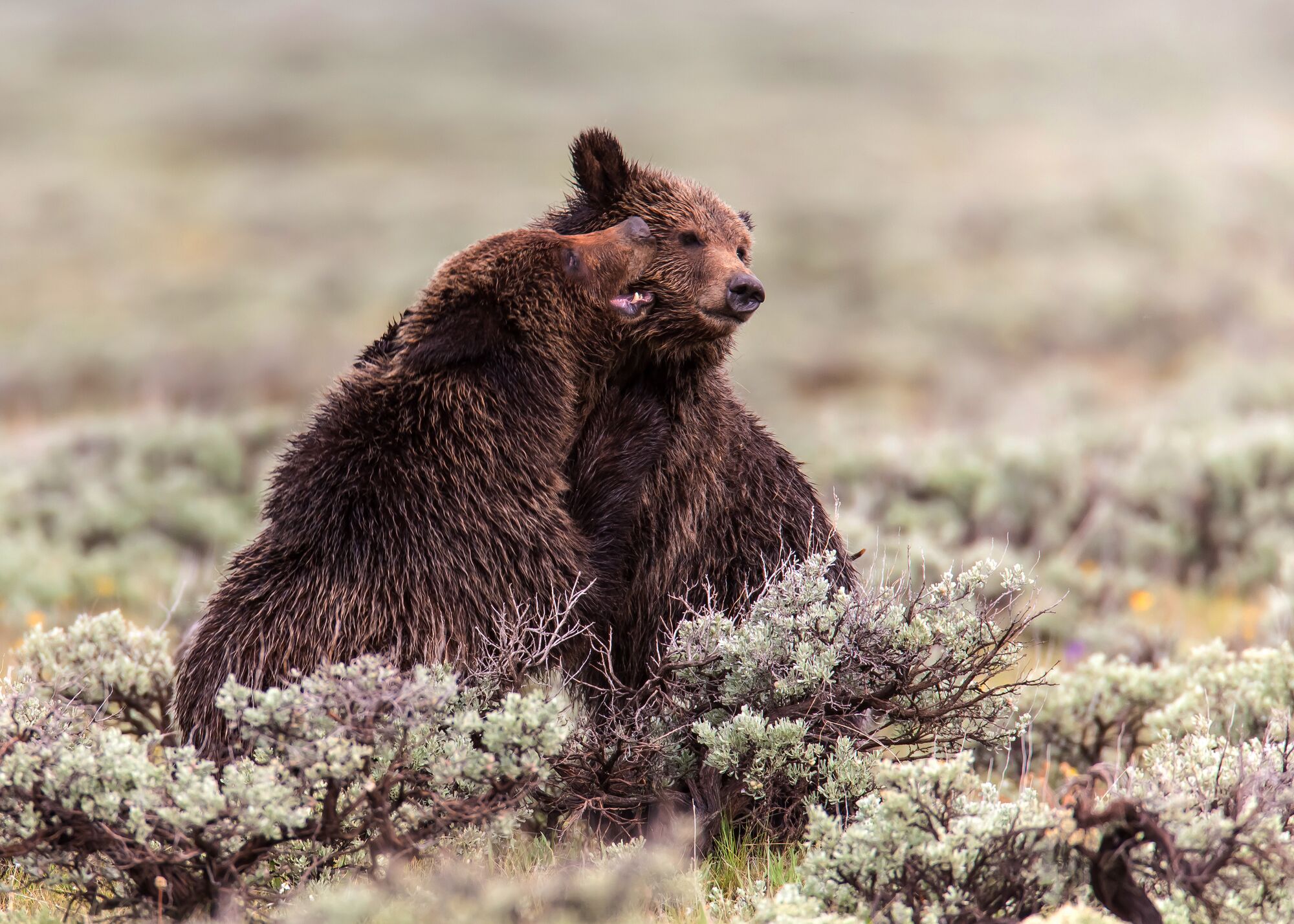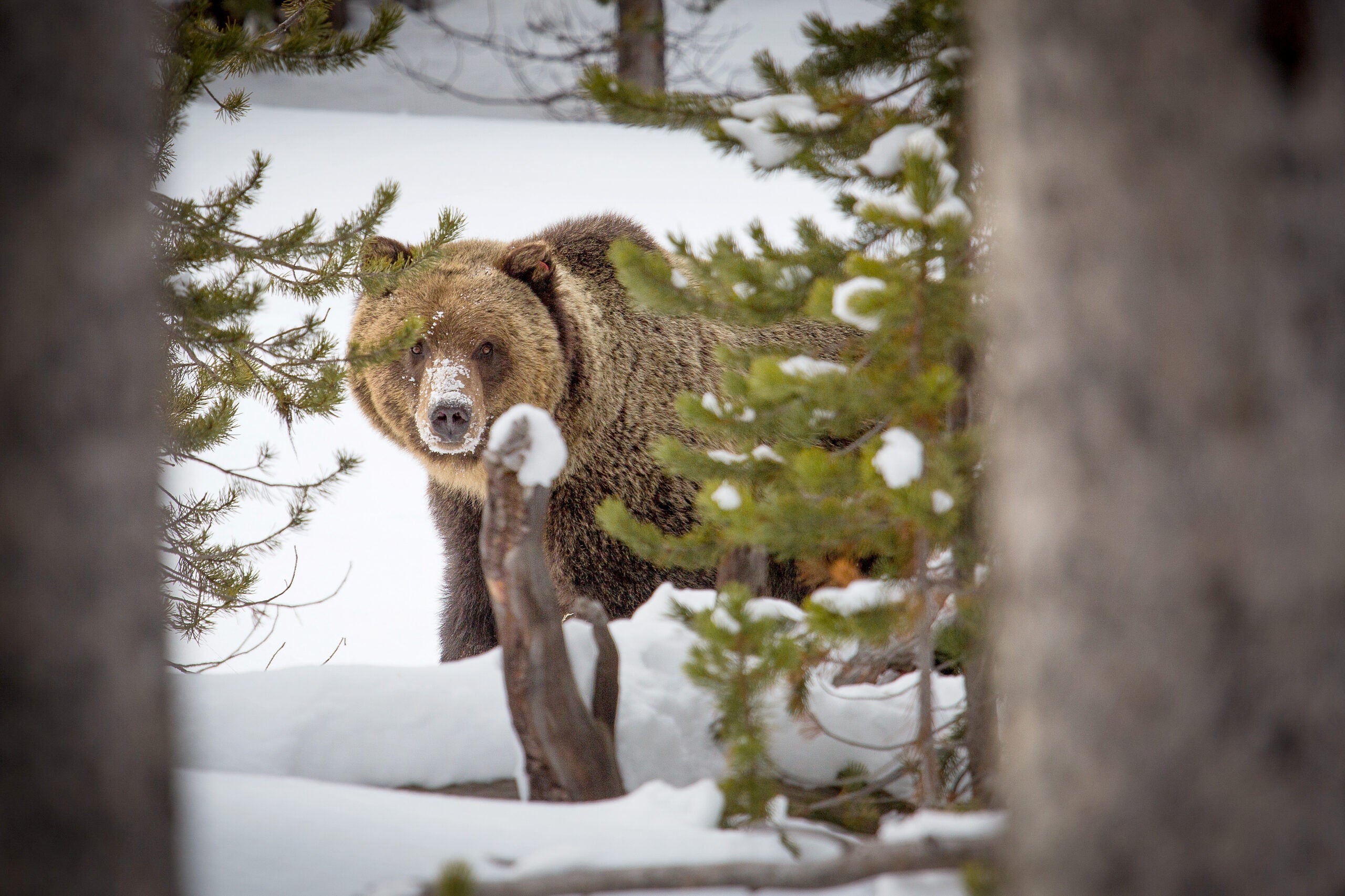Grizzly Bears Still Need Protections
Despite their precarious status, the U.S. Fish and Wildlife Service is currently considering petitions from Wyoming and Montana to delist grizzly bears. Here's how you can help.
Grizzly bears are a living embodiment of the wildness made possible by the large, intact ecosystems that characterize the American West.
Like wolves and bison, grizzlies are a keystone species, playing a crucial role in ecosystem health. Grizzlies are also sacred to many Indigenous communities, like the Northern Cheyenne Tribe, who continue to fight for their protection. For many of us, grizzlies offer a vital hope for retaining the important connections between the human and wildlife inhabitants of our lands.
Grizzlies Still Need Federal Protections
The grizzly bear is currently protected as threatened under the Endangered Species Act, and while bears have started to recover in a handful of locations, they continue to face significant threats to their survival.
Despite their precarious status, the U.S. Fish and Wildlife Service is currently considering petitions from Wyoming and Montana to delist grizzly bears in the Greater Yellowstone and Northern Continental Divide ecosystems. Such a decision would remove their protections and put them at risk of killing from the same hostile state agencies that seek their delisting. The service is expected to decide on the delisting petitions this year.
For decades, grizzly bears faced relentless persecution throughout the U.S. In the 19th and early 20th centuries, bears were shot, poisoned, and trapped wherever they were found, eliminating them from 98 percent of their range in the lower-48 and reducing their population to fewer than 1,000 individuals. While their numbers have improved, a delisting decision from the U.S. Fish and Wildlife Service would only set us back from ensuring landscape and ecosystem resilience.
Earthjustice has fought to maintain protections for grizzly bears for years, and we will continue to do so until the species is fully recovered. As the service examines the science on grizzly bears, it must acknowledge and address the increasingly significant threats that bears face as a result of climate change, killing by humans, hostile state management, and increased road densities. Rather than moving forward with a premature attempt at delisting grizzly bears, the service should recommit itself to the full recovery of grizzly bears within the lower-48.
Grizzly bears in the Greater Yellowstone and Northern Continental Divide Ecosystems remain isolated from each other. A continued listing under the Endangered Species Act is essential to allow bears to move between these populations, contributing vital genetic diversity to the Greater Yellowstone’s island population and ensuring species resilience in the face of climate change and other threats.
Grizzly bears have also yet to recover in the vast majority of places where they used to live. The service is just in the beginning stages of identifying a plan to restore grizzly bears to the Bitterroot ecosystem – a vital landscape for ensuring a resilient population across the northern Rockies. And the service has not even started planning for restoration in the Cascades, which it previously identified as a priority recovery area. While recovery across these landscapes has not been achieved, the service cannot treat the Greater Yellowstone and Northern Continental Divide ecosystems as zoos for the species to remain walled within.
Climate Change and Human Development are Displacing Grizzlies
Climate change has made survival increasingly challenging for grizzlies. Our warming climate has contributed to the loss of whitebark pine seeds – an important food source for the bears in the Greater Yellowstone Ecosystem. In the wake of these changes, scientists have documented the bears’ transition to a more meat-based diet, which leads bears to lower-elevation areas where they experience greater potential for human conflict and grizzly mortality. While people in lower elevations might see more grizzlies than they used to, it is largely a result of hungry grizzlies seeking new food sources.
Rising road densities are also a significant threat to grizzly bears. At the same time the U.S. Fish and Wildlife Service is considering delisting, the Forest Service is actively weakening habitat protections for grizzly bears in the Northern Continental Divide and Bitterroot ecosystems by allowing for increased roading. Both the existence of roads and their use displace grizzly bears, and roads further increase the risk of bear mortality as a result of poaching and human conflicts.
By delisting grizzly bears in the Greater Yellowstone and Northern Continental Divide ecosystems, the service would turn over management to increasingly hostile state agencies. We have already seen the disastrous state management of gray wolves when they were delisted in the Northern Rockies. We cannot open up grizzly bears to the same persecution from agencies that want to see as many grizzly bears killed as possible.
Grizzly Bears are Essential to Our Ecosystem
Grizzly bears play an incredibly important role in ecosystems as a keystone species. They help to regulate prey species, disperse seeds, and aerate the soil. Protecting grizzly bears also means protecting the ecosystems that they call home.
The loss of a keystone species is akin to a home losing its foundation – it is felt throughout the entire ecosystem and cannot be replaced. At least one million of the Earth’s estimated eight million species are threatened with extinction in the coming decades, and likely more. Protecting the diverse range of species and the habitat on which they rely is more important than ever – especially a keystone species like the grizzly.
The U.S. Fish and Wildlife Service should recognize that countless threats remain for the grizzly bear on its road to recovery. We have come too far to start over now – and there is still work to be done. Earthjustice and our supporters will continue to fight on the grizzly bear’s behalf, and the numerous species and ecosystems that depend on them.

A pair of grizzly bears in Yellowstone National Park. (Todaysfotos / Shutterstock)
The Biodiversity Defense Program fights to reshape our relationship to lands, water, and wildlife everywhere by confronting the major drivers of the decline in nature, including habitat destruction and over-exploitation of wildlife.
